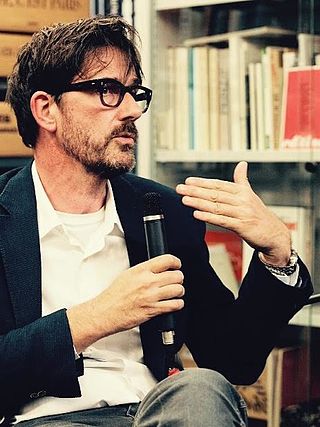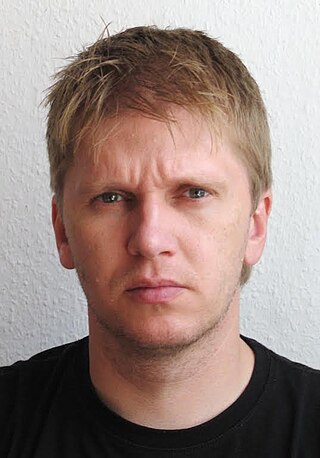
The Bauhaus-Universität Weimar is a university located in Weimar, Germany, and specializes in the artistic and technical fields. Established in 1860 as the Great Ducal Saxon Art School, it gained collegiate status on 3 June 1910. In 1919 the school was renamed Bauhaus by its new director Walter Gropius and it received its present name in 1996. There are more than 4000 students enrolled, with the percentage of international students above the national average at around 27%. In 2010 the Bauhaus-Universität Weimar commemorated its 150th anniversary as an art school and college in Weimar.
Oswald Mathias Ungers was a German architect and architectural theorist, known for his rationalist designs and the use of cubic forms. Among his notable projects are museums in Frankfurt, Hamburg and Cologne.

Bernhard Hans Henry Scharoun was a German architect best known for designing the Berliner Philharmonie and the Schminke House in Löbau, Saxony. He was an important exponent of organic and expressionist architecture.

Peter Zizka is a German designer and conceptual artist.
Lukas Pusch is an Austrian artist based in Vienna and Siberia. He studied painting at the University of Applied Arts Vienna, Surikov Institut in Moscow and the Dresden Academy of Fine Arts.
Karin Sander is a German conceptual artist. She lives and works in Berlin and Zurich.

Sabine Moritz is a German painter and graphic designer.
Arthur Engelbert is a professor in media theory and art sciences at the University of Applied Sciences Potsdam.
Mikael Mikael is a German artist.
Elisabeth von Samsonow is an Austrian artist and philosopher. She is the Professor for Philosophical and Historical Anthropology at the Kunst an der Akademie der bildenden Künste, Vienna. She is also a member of GEDOK Munich.
Michael Diers is a German art historian and professor of art history in Hamburg and Berlin.
Monica Bonvicini is a German-Italian artist who works with installation, sculpture, video, photography and drawing mediums to explore the relationships between architecture and space, power, gender and sexuality. She is considered part of a generation of artists that expanded on the critical practices of the 1960s and 1970s to conceive of space and architecture as a material that could engage with discourses of power and politics, defining art as an active form of ‘critique’. She was awarded the Golden Lion at the Venice Biennale in 1999 and the Preis der Nationalgalerie from the Staatliche Museen zu Berlin in 2005. She was appointed Commander of the Order of Merit of the Italian Republic in 2012.
Kristin Feireiss is a German architectural and design curator, writer, and editor. Her career has included co-founding the Aedes Architecture Forum in Berlin, serving as director of the Netherlands Architecture Institute, and participating as an international juror and commissioner at the Architecture Biennale in Venice. In 2013, Feireiss became a Pritzker Architecture Prize juror.

Roman Ondak is a Slovak conceptual artist.
This is a bibliography for Hans-Ulrich Obrist, a Swiss art curator, critic and historian of art. He currently lives in London.
Walther Ulrich Eduard Friedrich Gothan was a German paleobotanist, known for his studies of Carboniferous flora.

The Kunstmuseum Wolfsburg is an art museum in central Wolfsburg, Lower Saxony, opened 1994. It presents modern and contemporary art and is financed by the Kunststiftung Volkswagen.

Alwin Oswald Walther was a German mathematician, engineer and professor. He is one of the pioneers of mechanical computing technology in Germany.
Robert Suckale was a German art historian, medievalist and professor at Technische Universität Berlin.

The Canaletto Blick of Vienna (Austria) is a famous perspective of the city center of Vienna, seen from the Upper Belvedere Palace. It was popularized by a painting from Bernardo Bellotto, who sometimes used his uncle's famous name, Canaletto.








